Andanças has a new house in Campinho, near the waters of Alqueva
In 2021, Andanças arrived in Central Alentejo and found a new home in Campinho, one of the beautiful riverside villages of the Alqueva reservoir, the largest artificial lake in Europe.
This land, known as Campo e Campinho, already brings in its name the metaphor that links it to the surrounding nature and is located in the municipality of Reguengos de Monsaraz. It is made up of the county seat, São Marcos do Campo, Campinho and the village of Cumeada and has a geographical boundary with the county of Portel. By Campo we already understand, without seeing, the territorial physiognomy that defines it; the village of Cumeada is on a ridge that gives it its name; and Campinho, the new home of Andanças, integrates the nature of the place – the beautiful Alentejo plain of cork oaks and holm oaks – with a 3 km path that connects it to the calm and idyllic waters of Alqueva (Parque de Merendas do Campinho). Next to the harbor there are several aeronautical and nautical activities and for nature lovers, Campinho is a beautiful place to go hiking.
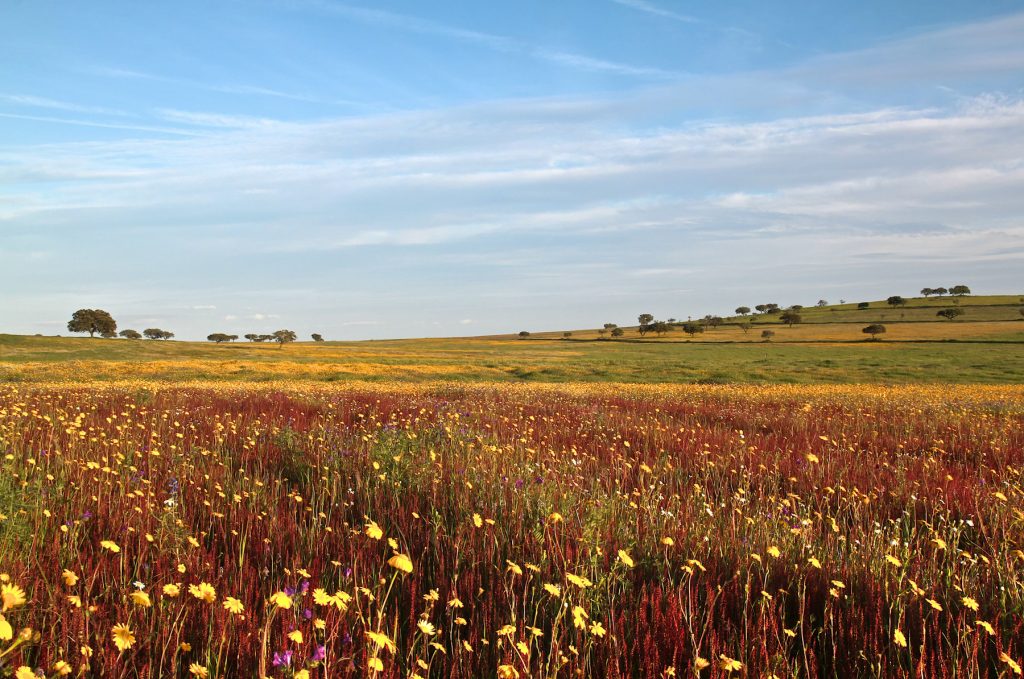
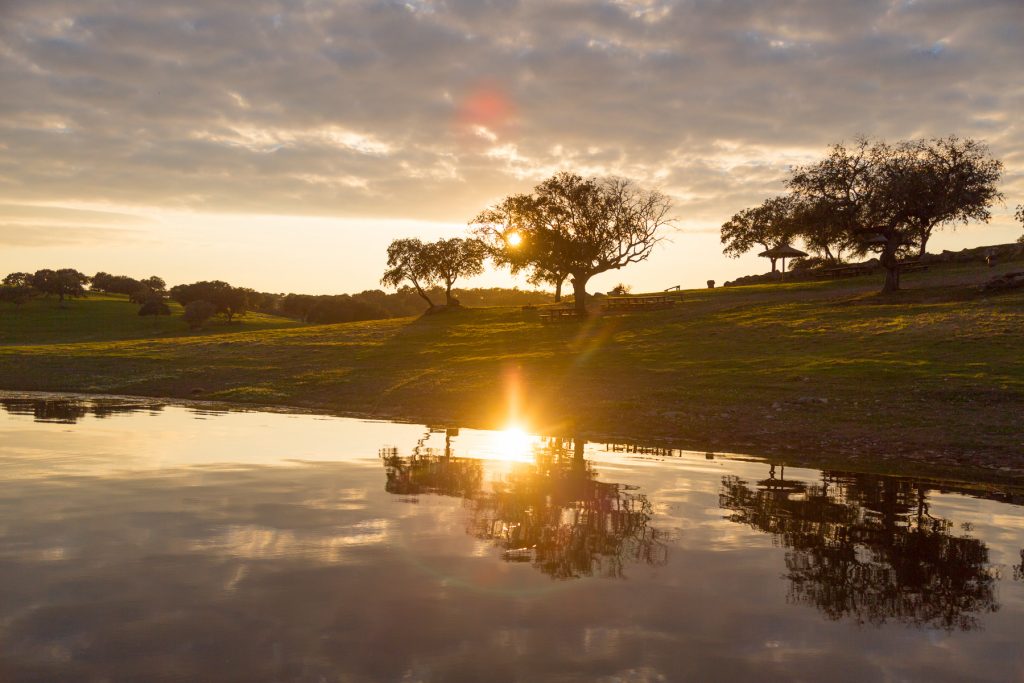
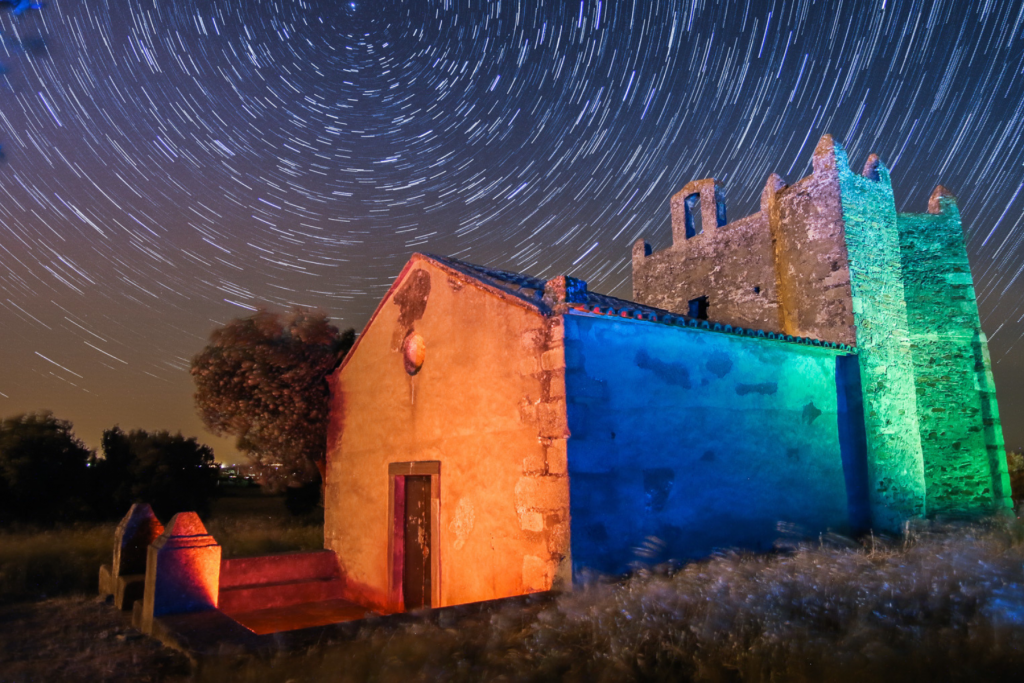





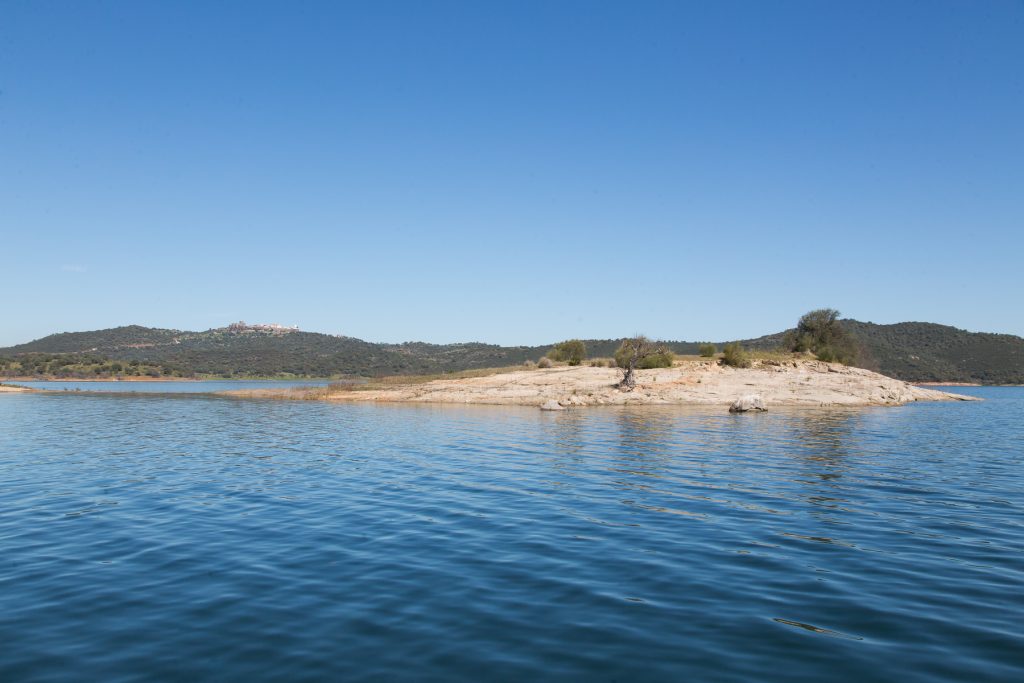
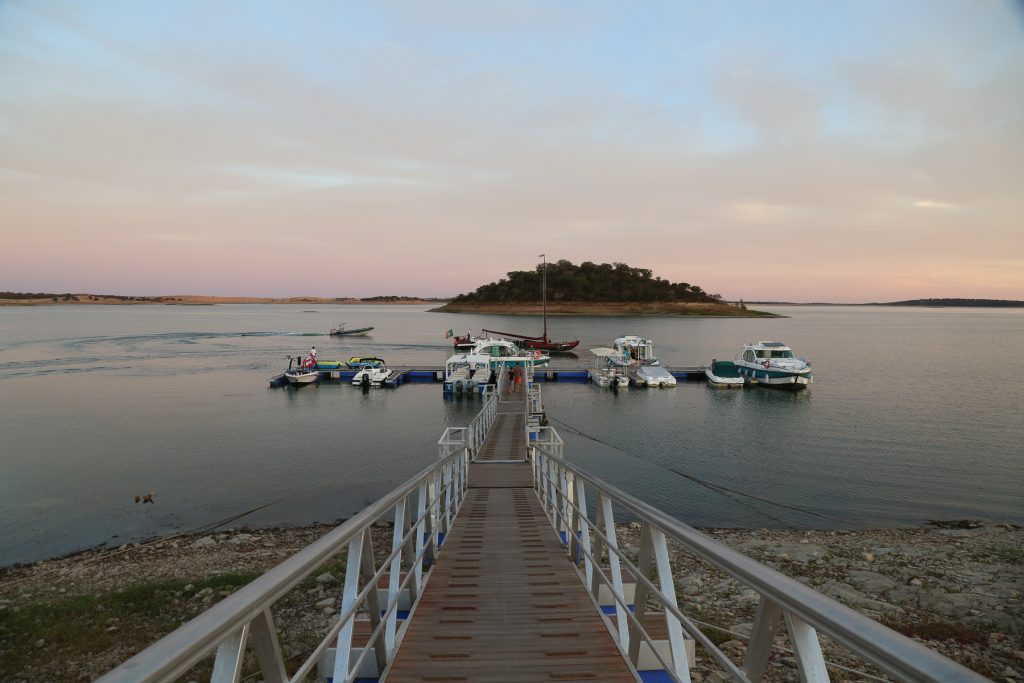

The «Inland Sea»
The waters of Alqueva extend in an immense mirror in the middle of the Alentejo plain, with countless islands and pieces of land drawing a unique landscape that seems almost staged. The largest artificial lake in Europe, also known as the “Inland Sea”, originates from the Guadiana River and floods an area that was once dry and thirsty for water, as the name implies: Alqueva derives from the word “alqueive”, “land of fallow” or “desert”.
In addition to the production of electricity, these waters thus serve an irrigation system for the entire Alentejo region, develop agriculture, create jobs and prevent land abandonment. These waters give life to the territory and also allow for countless other activities that “walkers” will be able to enjoy, such as hiking, horseback riding, boating in Alqueva, bicycle tours, spending a night in the middle of the lake. on the Casa Boats, practice water sports, go diving on the river beaches, get to know the local fauna and flora, observe the Alqueva sky at the Official Dark Sky Observatory and enjoy relaxing and resting in one of the calmest landscapes and regions of Portugal.
The dam reaches five Alentejo municipalities – Portel, Moura, Reguengos de Monsaraz, Mourão and Alandroal – and the Spanish border towns of Olivença, Cheles, Alconchel and Villanueva del Fresno, bathing several towns and villages that are touched by the beauty and breeze of Alqueva .
+ Info www.roteirodoalqueva.com
A marriage between the Alentejo plain and the alqueva water mirror
Reguengos de Monsaraz is the seat of the county that gives home to Andanças!
It is a traditionally agricultural town in Alentejo, located between the municipalities of Mourão, Évora, Alandroal, Redondo and Portel. Reguengos is famous for its handicraft, recognized nationally, an example being the pottery of São Pedro do Corval – the first pottery center in the country -, for the beautiful blankets of Reguengos, for the wines and for the large megalithic collection of the region that surrounds it. Adding to these attractions is its history closely linked to that of Monsaraz, the former county seat village which is one of the most beautiful and well-known places in Alentejo, and its proximity to the Alqueva Dam reservoir. All this makes the city of Reguengos de Monsaraz one of the most touristic spots in the Alentejo, which is also marked by a visit to the Igreja Matriz – built in honor of Santo António in 1887 -, Herdade do Esporão, Parque da Cidade and the center of the city. same.
When we arrive at the beautiful village of Monsaraz, we have the feeling of having returned to the medieval era. Its schist streets, its small limestone houses, the wall and the castle bring the atmosphere of kings, knights and maidens.
Monsaraz is one of the oldest historical towns in Portugal, which transformed this place into Vila Museu do Alentejo and calls for a mandatory stop for anyone visiting the region. Located on top of the hill and with an enchanting view over the great lake of Alqueva, it was once much disputed by the peoples, being conquered from the Muslims in 1167 by Geraldo Sem Pavor, in a military incursion from Évora.
It was the county seat until the 19th century, when the seat became Reguengos de Monsaraz. While the entire municipality of Reguengos de Monsaraz was developing, Monsaraz did not give way to the passage of time and froze its ancestral and, at the same time, timeless beauty.
And there is a lot to see and discover in Monsaraz, like its ancestral streets of picturesque houses; the walled enclosure erected during the Wars of Restoration with four large gates to enter the village; the castle built by D. Dinis, in the 14th century, which is classified as a National Monument and on top of which there is a viewpoint with the best view over the large reflecting pool of the Alqueva Dam. In Largo D. Nuno Álvares Pereira it is possible to visit the stunning Mother Church of Nossa Senhora da Lagoa and the 19th-century Pelourinho, in white marble from Estremoz.
The Chapel of São José, the House of the Inquisition, the Casa do Juiz de Fora, the restored Church of Santiago and the old Cisterna, which is said to have been a mosque originally, and the Chapel of São João Batista, are still other places to visit. they can visit by walking through the schist streets, as well as the Ermidas of São Bento, São Lázaro, Santa Catarina and São Sebastião, without missing the Alentejo handicraft shop where you can see the typical mantas. It is well worth staying in the village until sunset, which offers the warm tones of the Alentejo sun with privileged views from one of the highest points in the region over the plain and the water of Alqueva, a rare and beautiful “wedding” that happens in these lands.
If you want to stay until nightfall to see the region’s famous starry sky, you can also dine in the village, taste the typical dishes of this region, such as migas or lamb, and its beautiful wines.
São Pedro do Corval was known as Aldeia do Mato at the beginning of the 17th century. It was the main settlement in the current municipality of Reguengos de Monsaraz, well known for its clay-rich soils.
Located a few kilometers from Monsaraz, this town is known for being the land of pottery. Here you will find the largest concentration of clay artisans in the whole country, currently having around 35 potteries.
Pottery, wine and agriculture are the sources of occupation for the inhabitants of São Pedro do Corval and surroundings and the attraction of tourists who come to visit the location.
A walk through São Pedro do Corval allows you to appreciate the art of local artisans, in the quiet Alentejo, with a simple and pleasant rural architecture, stroll in the beautiful Jardim D. Maria da Graça Villaret Ratinho, visit the beautiful Igreja Matriz and the Ermida de São Pedro, or appreciate the various and curious megalithic monuments present in the area, or simply enjoy good Alentejo food.
+ info about Olaria de São Pedro do Corval here.
The region of Reguengos de Monsaraz is very rich in testimonies of the millenary presence of man in this region. There is a lot to visit, from tapirs to cromlechs and menhirs, there are 150 archaeological finds left by our prehistoric ancestors, who lived here over 6000 years ago.
+ info here
To visit
Antas 1 and 2 of Olival da Pega
Cromeleque do Xerez
Cromeleque dos Perdigões
Menir da Belhoa
Menir das Vidigueiras
Menir de Santa Margarida
